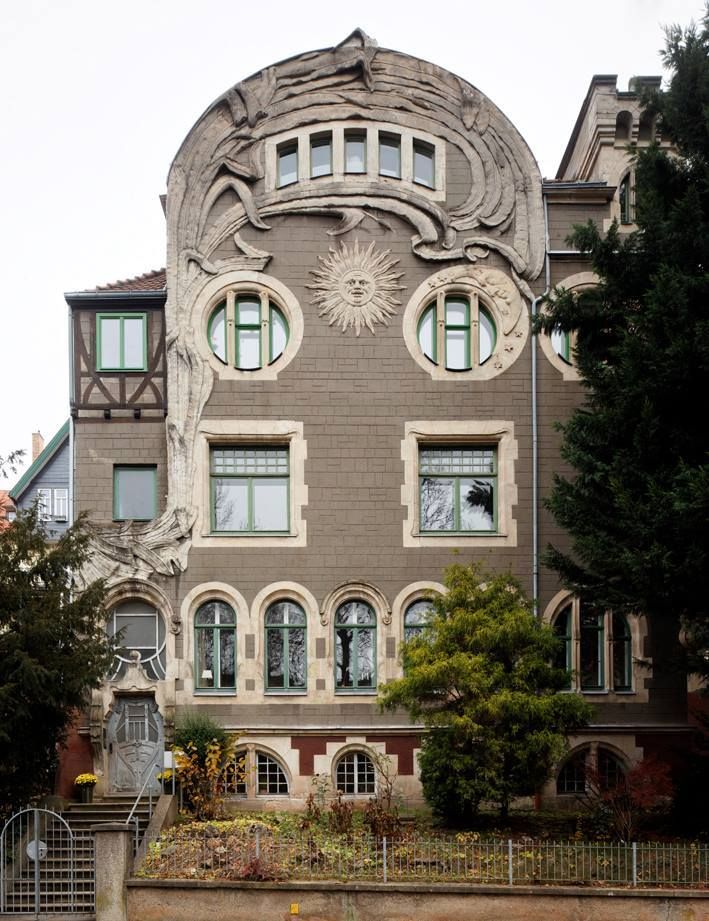#4628. Expressive Art Nouveau façade with wave-like elements and solar motif
This is a remarkable example of Art Nouveau (Jugendstil) architecture, characterized by fluid, organic lines and decorative elements inspired by nature. The façade of the building demonstrates typical features of this style from the late 19th to early 20th century.
Particularly noteworthy is the upper part of the façade with a pronounced sculptural element resembling a wave or plant motif, which frames the semicircular row of windows on the top floor. In the center of the façade is a decorative sun with rays — a symbol commonly found in Art Nouveau architecture.
The round windows (portholes) at the second-floor level add a maritime theme to the building, which, together with the wave-like element, creates a sense of movement and fluidity. The lower part of the building is designed more traditionally, with arched windows and a clear rhythm.
The color palette of the façade is restrained — predominantly sand-gray tones with green window frames, which emphasizes the sculptural quality and plasticity of forms. In front of the house is a small garden framed by a decorative fence, which complements the overall composition and underscores the connection between architecture and nature — a key idea of the Art Nouveau style.
